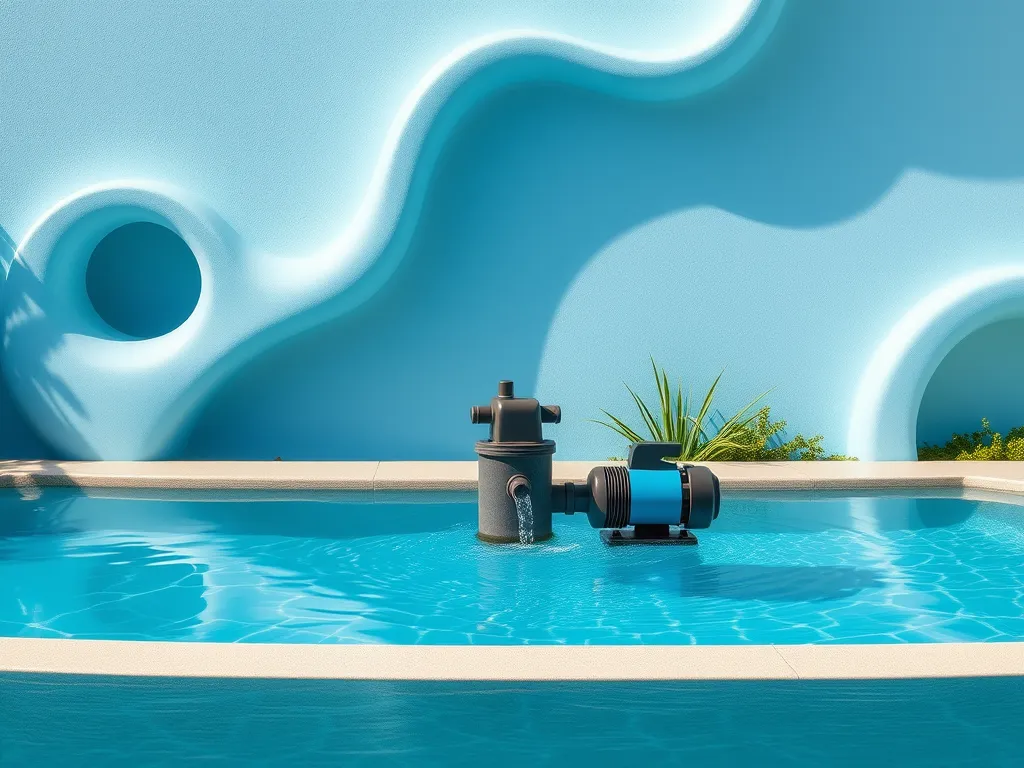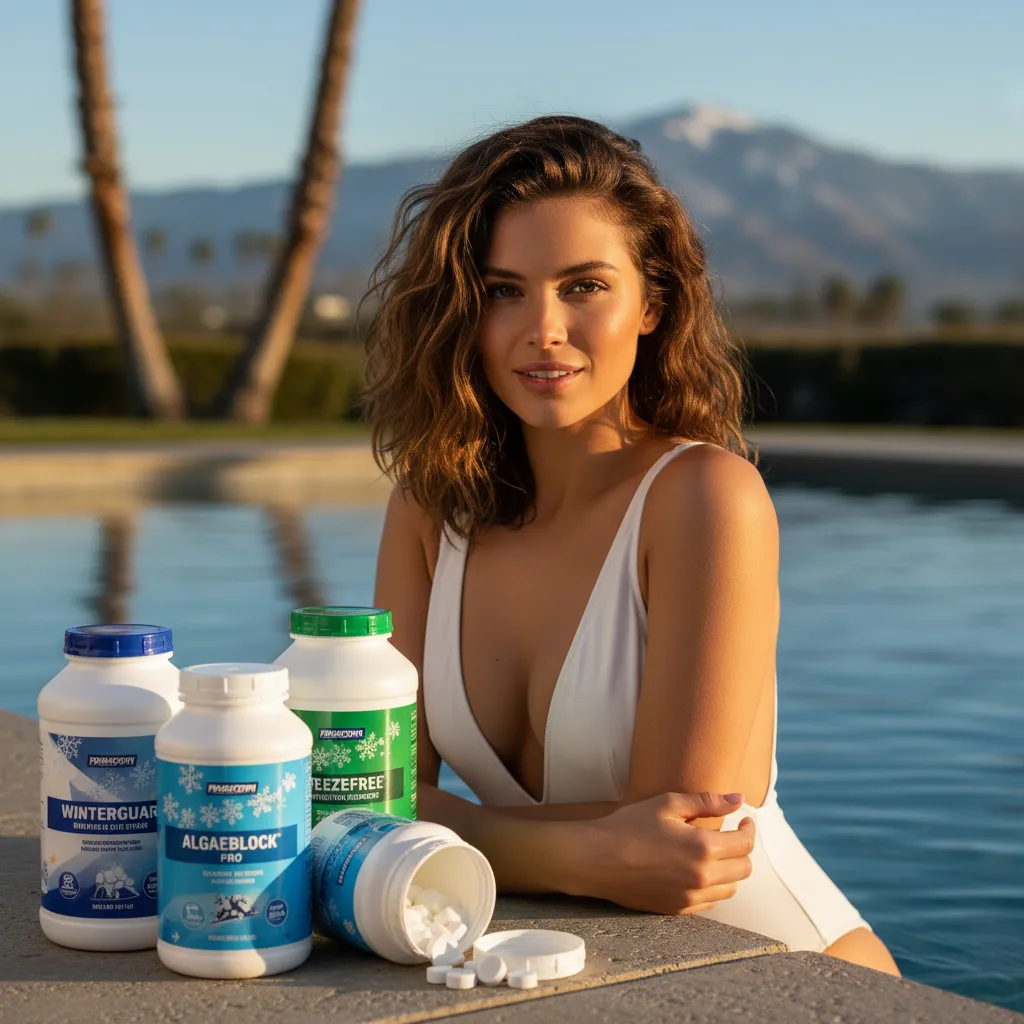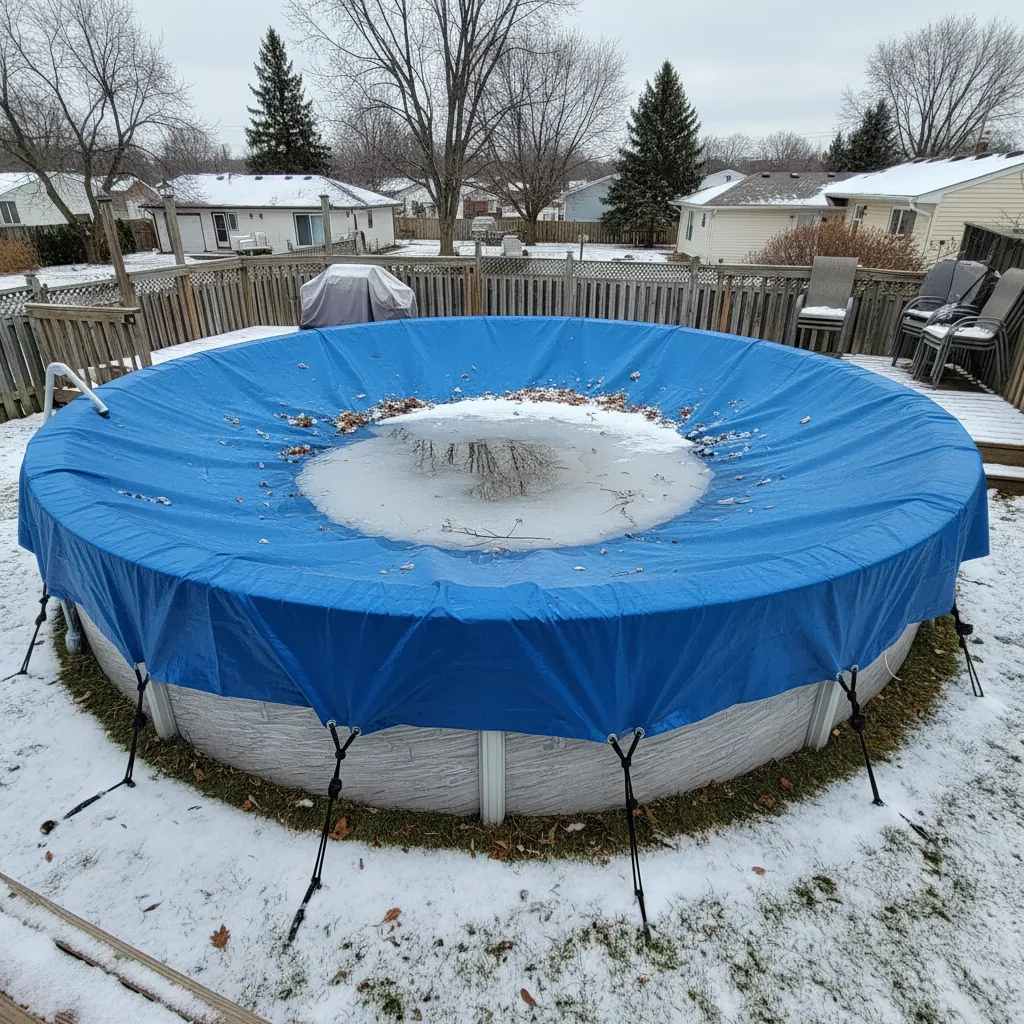What is a Pool Turnover Calculator?
Published on: April 25, 2025 | Last Updated: April 13, 2025
Written By: Marcus Thornfield
A pool turnover calculator helps you determine how long it takes to filter all the water in your pool. This is called “turnover time.” Proper turnover keeps your pool clean and safe. You need three numbers: your pool’s total volume, your pump’s flow rate, and the time it runs daily. The calculator does the math for you, so you can adjust your pump settings if needed.
Pool Turnover Calculator
How to Use This Calculator
- Enter your pool’s total water volume in gallons.
- Enter your pump’s flow rate (gallons per minute).
- Enter how many hours the pump runs each day.
- Click “Calculate” to see results.
For best results, run your pump long enough to complete at least 1 full turnover daily. Commercial pools may need 2-3 turnovers.
Crucial Winterizing Products
"The all-in-one solution for a guaranteed clear spring opening."
All-in-One Closing Chemical Kit
Winter demand is high - check stock
"The 'set & forget' option. This is the easiest winterizing I've ever done."
Simple 3-in-1 Winterizing Balls
Winter demand is high - check stock
"Invest once to protect your liner and prevent a swamp in the spring."
Heavy-Duty Winter Pool Cover
Winter demand is high - check stock
Pool Turnover Rate: Key Factors Influencing Calculation
Calculating pool turnover involves multiple variables. Each impacts how quickly water cycles through the filtration system. Proper turnover ensures balanced chemistry, clear water, and efficient sanitization. Pool chemistry is crucial for maintaining a healthy swimming environment. Balancing chemicals like chlorine and pH keeps the water safe and inviting.
Pool Volume and Dimensions
Volume (gallons) is the foundation of turnover calculations. Rectangular pools use length × width × average depth × 7.5. Freeform designs require segment measurements or digital tools. A 16×32-ft pool with 4-ft depth holds 15,360 gallons. Larger volumes demand higher flow rates or longer pump run times. To keep your pool clean and safe, it’s important to calculate the gallons of water accurately. Knowing the volume helps in determining the right pump and filter system for your needs.
Pump Flow Rate Capacity
Measured in gallons per minute (GPM), pump capacity determines how much water moves through the system. A 1.5 HP pump typically delivers 40–60 GPM. Variable-speed pumps adjust flow rates, reducing energy use by 30–70%. Always match pump capacity to filter and plumbing limits. Knowing the right pump capacity is essential for effective pool maintenance. A pool depth calculator can help you determine the best volume of water for your specific needs.
Plumbing Diameter and Hydraulic Resistance
Pipe size affects flow velocity and friction loss. A 2-inch pipe handles 73 GPM at 6 ft/sec, while a 1.5-inch pipe maxes at 42 GPM. Elbows, valves, and heaters add resistance. Total dynamic head (TDH) calculations factor in these losses to determine actual flow rates. Knowing these details is essential for anyone looking to build a pool. A pool construction cost calculator can help estimate the costs related to the right plumbing setup.
Filter Type and Cleanliness
Sand filters tolerate higher flow rates (20–25 GPM/sq.ft) but require frequent backwashing. Cartridge filters operate at 0.375 GPM/sq.ft, slowing turnover as debris accumulates. DE filters offer the finest filtration but need periodic cleaning. Clogged filters reduce flow by 15–40%. Choosing the right filter can make pool maintenance easier. An all-purpose sand pool filter is a great option that balances efficiency and effectiveness.
Water Temperature and Viscosity
Colder water (below 65°F) increases viscosity, lowering flow rates by 5–12%. Warmer water (above 85°F) accelerates chemical reactions, necessitating faster turnover to maintain chlorine efficacy.
Bather Load and Contaminant Introduction
High-traffic pools (e.g., swim clubs) need 4–6 turnovers daily. Each swimmer introduces 0.5–1.0 lbs of organic waste weekly. Commercial pools often use surge tanks and secondary filtration to manage loads.
Pool Turnover Formula and Equations
The basic formula is:
Turnover Time (Hours) = Pool Volume (Gallons) ÷ Flow Rate (GPH)
Advanced calculations adjust for real-world conditions:
- Adjusted Flow Rate = Pump Rating × (1 – Filter Pressure Loss %)
- Seasonal Multipliers: Summer (1.0), Spring/Fall (0.8), Winter (0.6)
| Variable | Description | Typical Range |
|---|---|---|
| Volume | Total water capacity | 10,000–30,000 gal |
| Flow Rate | Pump output at TDH | 30–100 GPM |
| Turnover Time | Cycle duration | 6–12 hours |
Also See: Algaecide Dosage Calculator for Clear Water

Recommended Turnover Rates by Pool Type
| Pool Type | Turnover Time | Flow Rate (GPM) |
|---|---|---|
| Residential | 8 hours | 25–50 |
| Commercial | 4 hours | 75–150 |
| Olympic | 2.5 hours | 300+ |
| Spa | 30 minutes | 15–25 |
Seasonal Adjustments for Optimal Turnover
Summer demands 1.5x winter turnover rates. Algae growth doubles for every 18°F rise between 50–90°F. Adjust pump timers monthly:
| Season | Multiplier | Run Time (Hours) |
|---|---|---|
| Winter | 0.6x | 4–6 |
| Spring/Fall | 0.8x | 6–8 |
| Summer | 1.0x | 8–12 |
Troubleshooting Common Turnover Issues
- Cloudy Water: Check filter pressure (ideal: 10–15 PSI over clean rating)
- Algae Blooms: Increase turnover to 4x daily for 48 hours
- Air in Pump Basket: Inspect unions and O-rings for leaks

Specialized Turnover Calculations
Saltwater Pools
Chlorine generators require 8-hour turnover to maintain 3–4 ppm chlorine. Higher salinity (3,000–4,500 ppm) increases conductivity but doesn’t affect flow.
Heated Pools
Heat pumps add 5–8 ft of head pressure. Reduce flow by 10% when heating to maintain efficiency.
Indoor Pools
Lower evaporation allows 20% longer turnover times. Monitor humidity (50–60% RH ideal) to prevent surface condensation.
Benefits Of Proper Pool Turnover
- Reduces chlorine demand by 25–40%
- Extends pump lifespan (8–12 years vs. 4–6)
- Prevents $300–$600 annual chemical overuse
FAQs
What is the Ideal Turnover Rate for a Residential Pool?
8 hours is standard. Pools under 20,000 gallons may use 6 hours. Always verify with local health codes.
How Do I Know if My Pool’s Turnover Rate is Too Slow?
Visible debris accumulation within 2 hours of cleaning indicates insufficient turnover. Test flow rates with a bucket (gallons collected × 60 ÷ seconds).
Can I Reduce Turnover Time Without Upgrading Equipment?
Optimize plumbing: replace 90° elbows with 45° (cuts resistance 20%). Clean filters weekly. Use My Pool Calculator for real-time adjustments.
Additional Resources for You:
- Pool & Hot Tub Alliance (PHTA). (2021). ANSI/APSP/ICC-11 Standard for Water Quality in Public Pools and Spas. Alexandria, VA: PHTA.
- How to Calculate Your Pool Turnover Rate
- r/pools on Reddit: How to calculate turnover rate for pool?
- A Guide to Pool Circulation and Turnover Rate
- LORENTZ Pool Calculator





